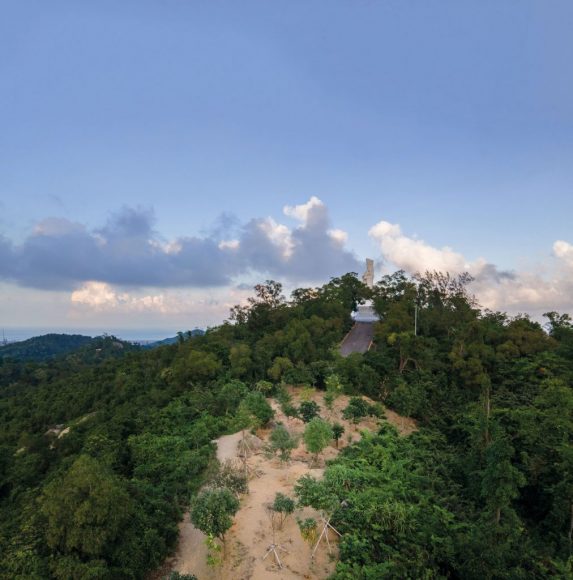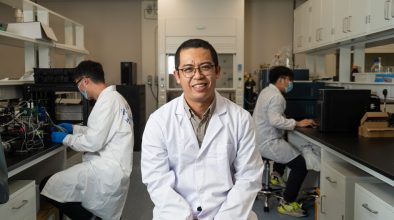Over the years, thousands of Macao’s trees have been damaged by typhoons, termites and pests. The city has now become a surgery of sorts as the government has started a massive reforestation project – and it’s not just woodland experts who are replanting the city’s forests.
There is no doubt that all of the world’s forests are important for the future of the planet. Trees – along with every other plant – take in the sun’s energy, water and carbon dioxide before releasing oxygen into the air so that we can breathe. They also help soil capture significant amounts of carbon for future energy use and provide wood for us to build with or burn. And they provide habitats for animals, livelihoods for humans, protection for watersheds – the land areas that drain into a river or lake – and prevent soil erosion, and are crucial in the fight against climate change as they absorb harmful greenhouse gases. In short, we – and the entire Earth – need forests to survive.
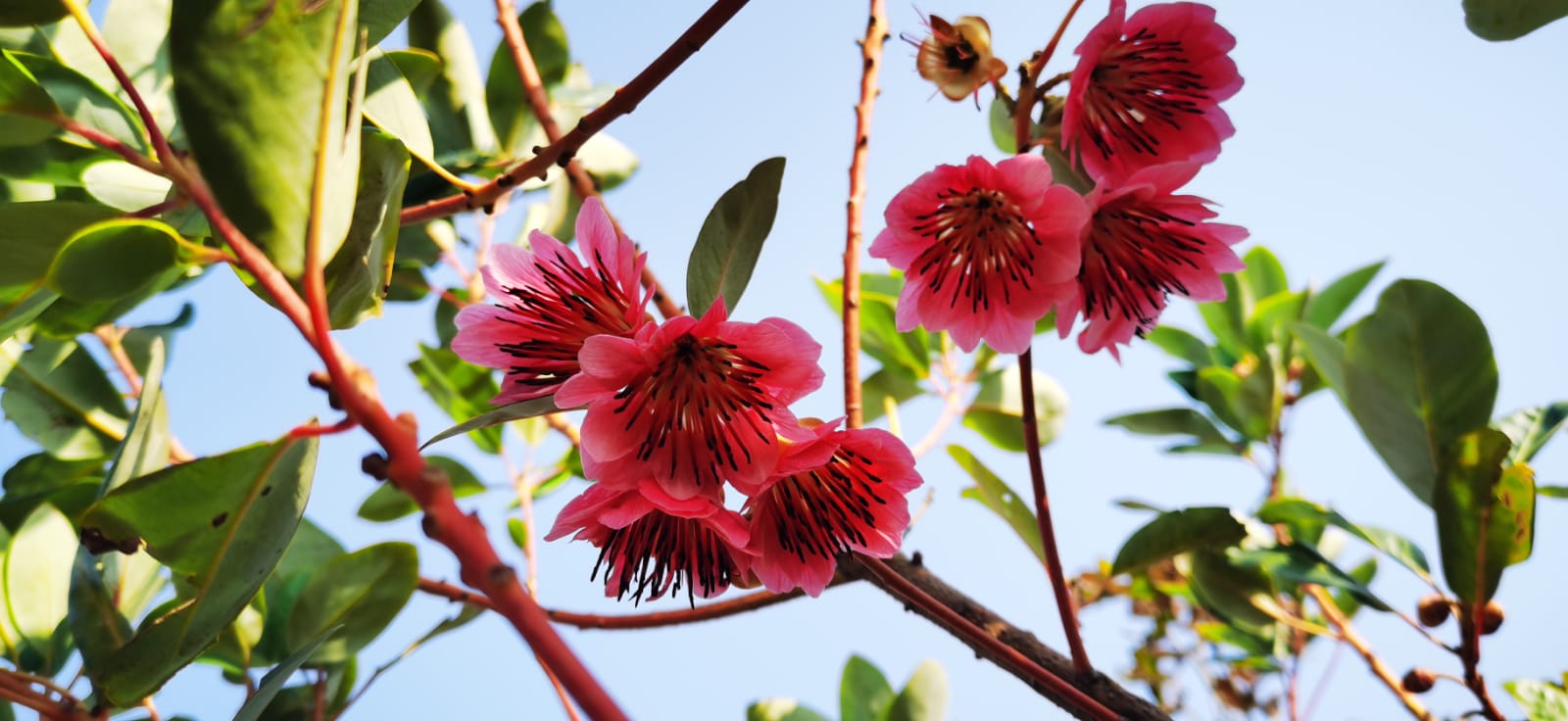
Macao also needs its woodlands. It too needs watershed and soil protection, habitats for local animals, jobs for humans and places for people to walk around and enjoy. Around half of the city’s green spaces are located in Coloane, with the rest scattered across the SAR, a territory with a land area that’s roughly 33 square kilometres. This equates to about 17 square kilometres of green space in Macao, although woodlands only take up about 500 hectares – five square kilometres – of space. However, these forested zones have suffered serious damage over the past few years due to a trio of powerful natural disasters.
The first of these disasters was Typhoon Hato in 2017, which was one of the strongest typhoons to hit the region in 50 years. The next year came Typhoon Mangkhut, another powerful force that prompted all of the city’s casinos to close for the first time as it passed through town. Then, just last August, Typhoon Higos uprooted trees and caused damage across the SAR despite being less powerful than Hato or Mangkhut. Combined, these three typhoons destroyed or damaged more than 500,000 trees in Coloane’s mountain forests, according to the government’s Municipal Affairs Bureau (IAM).
Macao’s government understands the importance of the city’s woodlands and is dedicated to safeguarding the forests in the light of those devastating typhoons. In fact, the IAM last year planted more than 40,000 seedlings over an area of about 0.4 square kilometres in Coloane during the first stage of a massive reforestation project. By 2024, the bureau aims to restore 1.2 square kilometres of forest in Macao. Last year’s replanting mission was just the beginning.
Re-rooting the greens
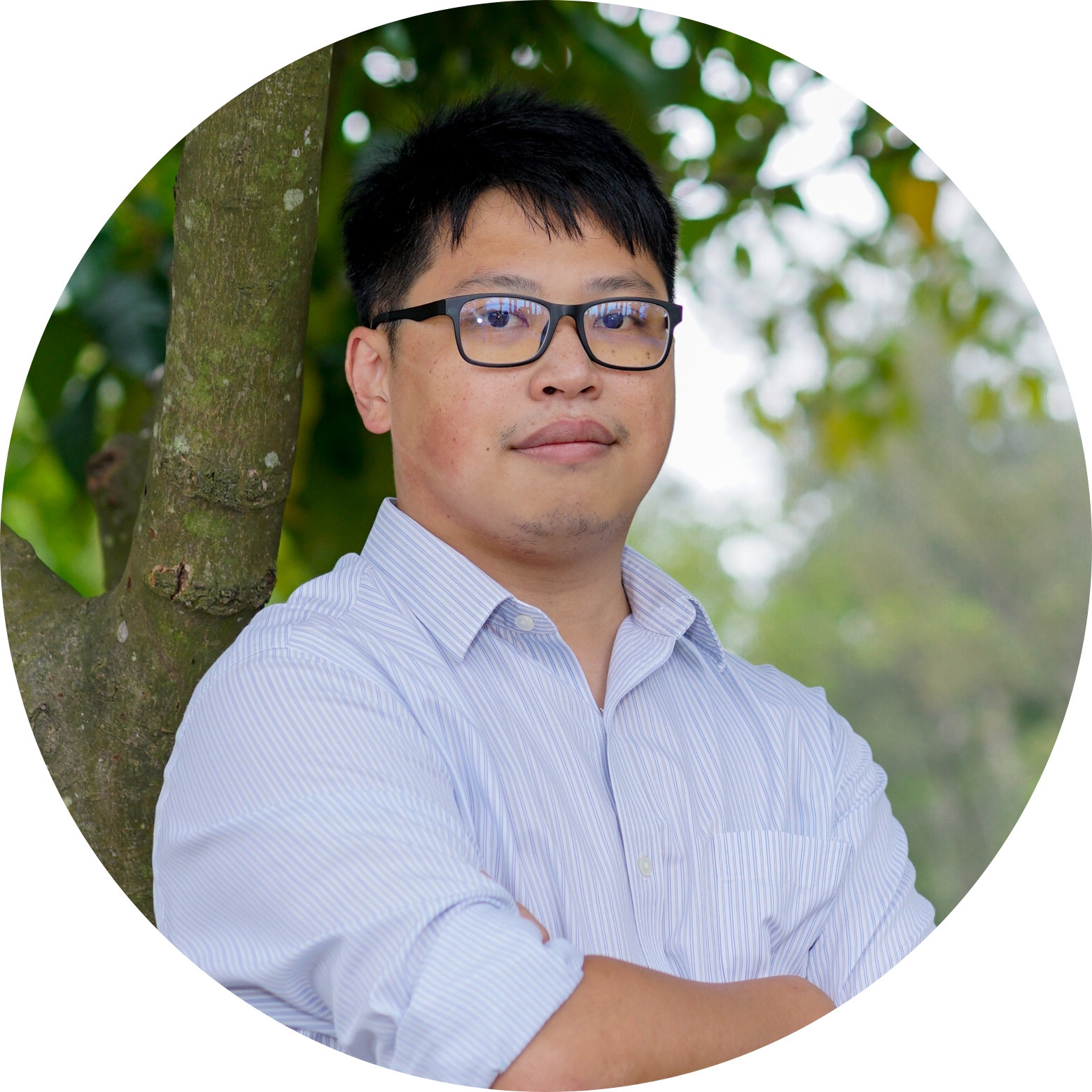
Philip Kuok Fei Lek, chief of the Division of Conservation of Nature under the IAM’s Department of Green Areas and Gardens, meets us near one of the newly replanted woodland zones in Coloane. He tells us that although some of Macao’s forested zones are ‘naturally resilient’, there are nevertheless extensive swathes of woodland ‘that are severely damaged and need to be replanted for continuous repair and restoration’. He says that a few years ago, the IAM commissioned a team of experts from Guangzhou’s Sun Yat-sen University to investigate the city’s woodland areas. The team has been doing that since 2018 and, since then, the Forestry Administration of Guangdong province has also been supporting the city’s tree restoration project by placing the Guangdong Academy of Forestry in charge. Kuok leads the IAM division on the ground but works closely with the academy to ensure the project is carried out successfully.
Earlier this year, Kuok’s division planted some tree species in Coloane that were each around 80 centimetres high at the time but have now reached up to three metres in height. He says that the species are all native to the southern China region and they include the ‘Elaeocarpus sylvestris’, the ‘Castanopsis hystrix’, the ‘Artocarpus nitidu’ and the ‘Ormosia pinnata’, adding that the division ‘prioritises the replanting of trees native to southern China’. He also says that when these trees eventually scatter their leaves, this will aid plant growth on the forest floor.
This reforestation project is ‘necessary’, according to Kuok, because of the typhoon damage. He notes that a previous reforestation scheme in the mountainous areas of Coloane began back in the 1980s, however the ‘pioneer species’ – which are the hardy trees that first colonise a barren environment or an ecosystem that has been disrupted by, say, a typhoon – that were planted ‘had short lifespans’. This is another reason, according to Kuok, that this reforestation project is necessary. He also notes that plenty of planning has to go into the new initiative, including what trees are selected. This, he adds, depends on the geographical conditions around every reforestation site. “It depends on how deep the roots will grow under the soil,” he says, “and whether or not they will cause damage to other surrounding roots. But [the ground] also needs to be deep enough so that the plant won’t fall over. It’s case by case, with soil analysis.”
Woodland clearing
The current restoration project isn’t just about replanting trees. It’s also about clearing damaged trees before new ones are planted ‘within five to 10 metres from existing woodland trails’. This is part of the project’s second stage. It sees the team zeroing in on signs of degradation, clearing the damaged trees and ‘gradually replacing them in an orderly manner’, using supporting frames wherever necessary. “We also clear out the vines as they suffocate the trees’ growth,” says Kuok, pointing to a nearby clump as he explains how allowing these vines to grow could reduce – or even destroy – the biodiversity in the area. Through restoration, he says, plants grow better and then can provide food sources and good breeding conditions for wild animals.

Local eco-activist Joe Chan – who is the chairman of the Macau Green Student Union as well as vice-chairman of Green Future, two city-based environmental groups he helped to establish – says that he hopes the reforestation project is successfully completed. He understands the need for small-scale and regional reforestation schemes in Macao but says he is wary of the impact that human intervention can cause. “I understand and know the need for reforestation,” he says. “The government is right about the ageing problem in Coloane’s forests because the trees planted in the 1980s are getting old. But hitting a balance and minimising the impact of human intervention is key.”
Chan says that the new project, which started almost two years ago, is large-scale and that alone will impact the surrounding ecosystem, particularly in Coloane, which is the project’s main focus. “For example, the massive clean-up of old trees exposes the soil to the sun which interrupts the micro-ecosystem underground. Soil fertility and stability are also ruined by intensive interventions.”
But Chan is upbeat about the project. “Fortunately, the IAM has noticed the public’s concern on this issue. So, starting from the end of last year, they improved the way new trees are planted to ensure the survival of young branches. The government is doing a lot to transform Coloane but whether it’s good or bad for nature, only time will tell. It has been giving out lots of details on its planning and scientific data, so that’s a good sign.” Chan adds that he would like to see the IAM ‘sharing more long-term scientific research’ about the tree diversity in Coloane, as well as publishing ‘an online report about the biodiversity of Macao to evaluate the reforestation project’s effectiveness’.
The wood for the trees
Due to the ongoing analysis of the wooded areas in Macao, the total cost of the reforestation project has not yet been calculated. “Every year, we make adjustments based on the progress we’ve made on the restoration. We can only calculate the whole costs after the project is completed in 2024. And even though it’s planned, it still depends on the weather,” says Kuok.
The weather is just one of the challenges faced by Kuok and his team. Aside from the disruption caused by rainfall, there are also tree diseases that lie in wait and can ruin the saplings the team has just planted. In Macao, the most damaging pest is the ‘Hemiberlesia pitysophila Takagi’, a tiny insect that infests pine trees and sucks out the sap. This hampers their growth as an infestation disables them from photosynthesising, which can kill them over time. There’s also the Phytophthora root and stem rot, a fungal disease that can cause seed and stem rot of plants at various stages of their growth.
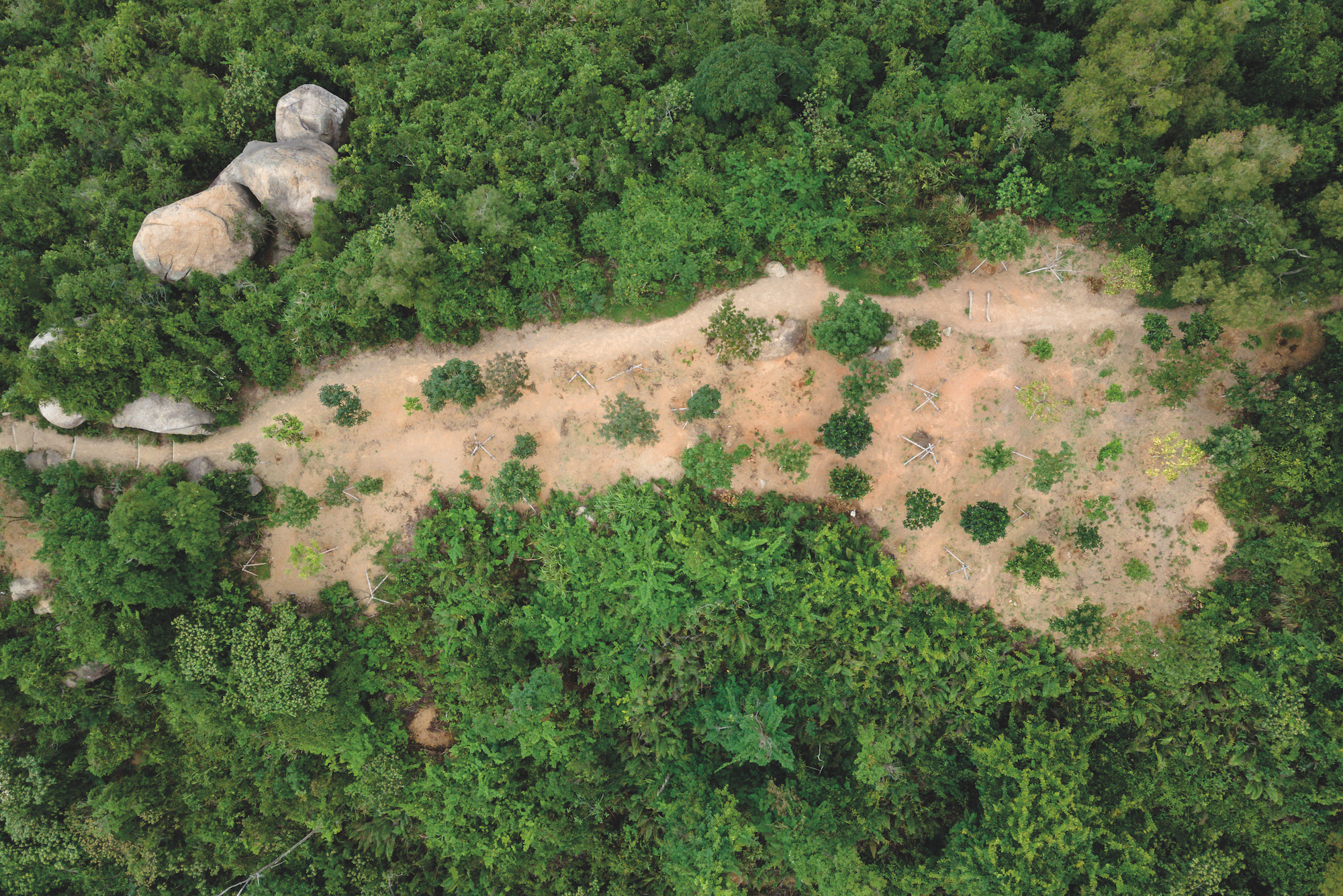
Another menace out there is one of the world’s most damaging pests, the termite. While most termites feed on dead wood, a few species eat live trees, weakening the plant’s limbs so that the branches break during storms, eventually killing the tree. Whether by disease, pest or typhoon, Kuok knows that damaged trees need replacing, so the project is constantly changing once newly damaged examples are discovered.
Despite the challenges, however, Kuok says that the survival rate of all the newly planted trees is around 90 per cent and that the trees have ‘successfully adapted to the local environment and the restoration effect has reached the planned requirements’. The IAM, says Kuok, is ‘closely monitoring the second phase of the project’ and the results, so far, ‘are in line with expectations’.
Joe Chan says that the zones in Coloane that are being rejuvenated under the project will be ‘hairless’ for a time, meaning that it will take a few years for these zones to be covered in tall trees once again. “In the short-term, most of Coloane will remain hairless for at least five years. But, in the long-term, the trees the government is planting are well adapted to our local environment, so they can establish a new ecosystem within decades if they are not damaged by another extreme typhoon or a drought in the coming years.”
Macao cares
Macao cares about its environment. And to promote environmental education, every year the government organises Macao Green Week, which always includes awareness-raising and a celebration of the city’s woodlands. In March, the IAM marked the 40th edition of Macao Green Week with tree-planting activities in Coloane. On the week’s launch day on 21 March, primary school pupils and former IAM workers whose duties were related to tree planting joined forces and planted 50 ‘Casuarina equisetifolia’ – whistling pine – trees at Hac Sa Beach Park. The People’s Liberation Army’s Macao Garrison also planted 250 saplings at the nearby Hac Sa Reservoir Barbecue Park.
In total, on the launch day, about 150 people joined the IAM’s team and helped with the ongoing reforestation project. As well as planting trees, the volunteers helped check on tree growth in the forested areas and they also fertilised soil and did some weeding. “Macao Green Week is held so the public can have a deeper understanding of the trees in Macao’s forests,” says Kuok. “They learn about the protection of nature and inherit the concept of ‘love the greens and build a better city together’.”
Members of the city’s Community Services Advisory Council – which is made up of locals who act as consultants to the government on grassroots issues – also planted 77 seedlings during Macao Green Week. These were for 25 Guangzhou cherry trees and 52 ‘Lagerstroemia speciosa’ – also known as giant crepe-myrtle – trees which were planted along Avenida dos Jogos da Ásia Oriental near Macau Jockey Club, as well as along Avenida do Oceano near Sai Van Bridge.
As Kuok explains, the Guangzhou trees ‘are dense and pink, as well as more heat-resistant’, while the crepe-myrtles – which boast purple flowers that bloom in the springtime – belong to a ‘well-travelled tree species that is wind-tolerant, drought-resistant and pollution-resistant’.
“These two kinds of trees,” he adds, “will bring richer colours to the city and [the area around those avenues] can become a new scenic spot for locals to enjoy in the future.”
Many trees have grown from 80 centimetres when they were planted to more than three metres now. Some have even reached a height of four metres.
Philip Kuok Fei Lek
Also during Green Week, there was a Forest Care event held at the Parque Natural da Taipa Grande next to the city’s international airport. This was an educational event, with around 100 participants being given the chance to experience what the reforestation team does every day. They were taught about individual sapling care as well as how the IAM team looks after Macao’s woodlands in general. They were also taught about the strict controls over planting trees in the SAR, as not just anyone can plant a tree anywhere they like. All in all, the visitors learned about the government’s dedication to Macao’s trees.
Anyone in Macao, however, can check out the new saplings and the reforestation project’s progress in Coloane any time. For anyone wanting to help the IAM team as well as the local environment and ecology, Kuok advises they regularly check on the IAM’s announcements online, especially during Macao Green Week. And as every year progresses, so will the size and amount of those replanted trees. Soon, if all goes well and the typhoons stay away, you will be able to see Macao’s forest for the trees.
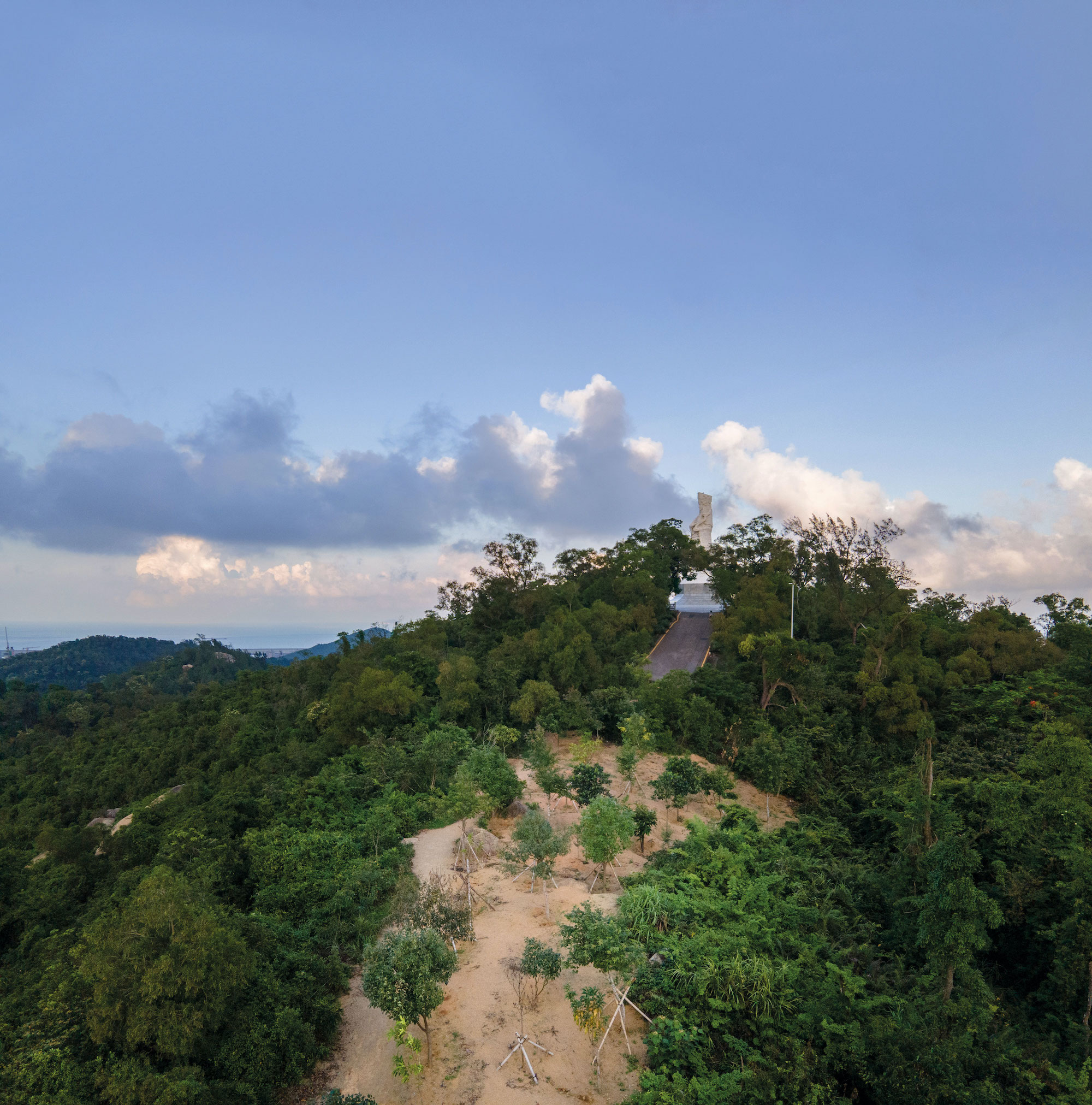
Top trees
A few tree species native to the southern China region that grow in Macao
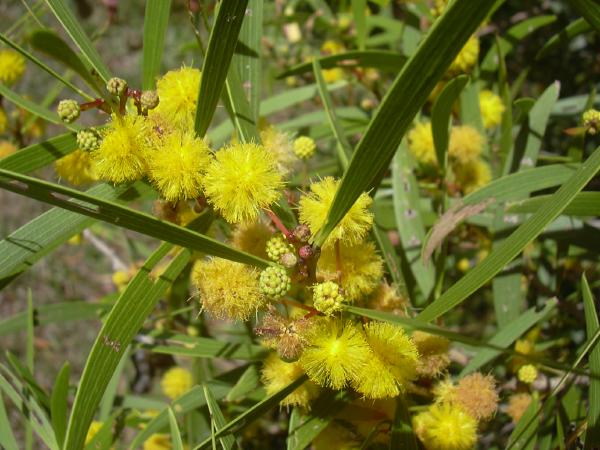
Acacia confusa
This perennial tree species – also known as the ‘Taiwan acacia’ – can grow from six to 15 metres tall. The species is commonly found in provinces like Guangdong, Guangxi, Hainan, Jiangxi, Sichuan and Yunnan, as well as in the Philippines and Indonesia. Its wood is used for agricultural tools, while its flowers can be used as flavourings in their raw form.
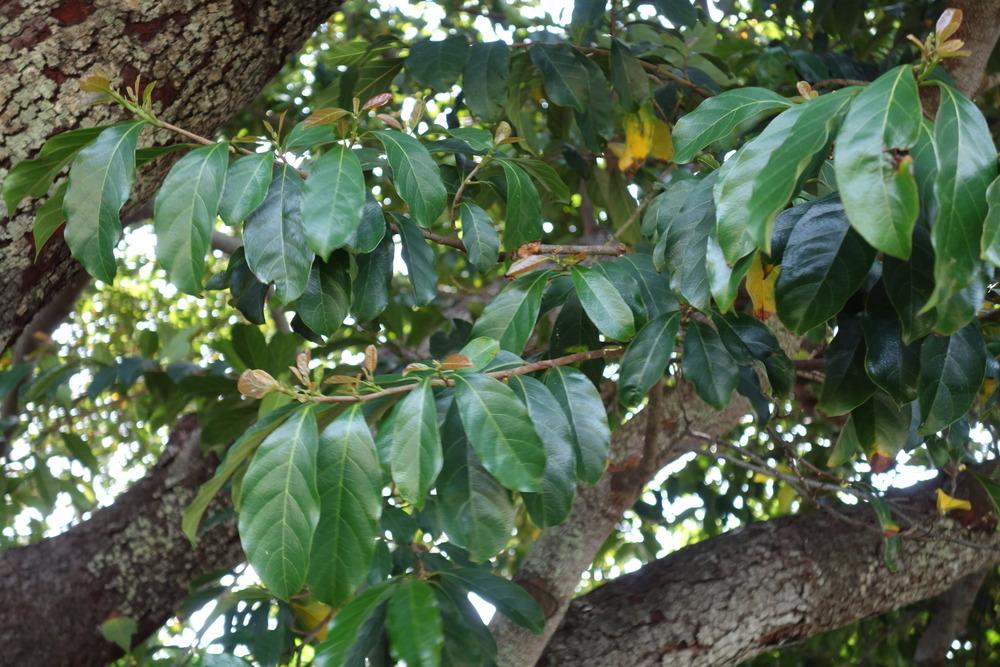
Artocarpus nitidus
Subspecies lingnanensis
Commonly found in the provinces of Guangdong, Guangxi, Hainan, Hunan and Yunnan, this species can also be found in Thailand, Cambodia and Vietnam. Also known as ‘Lingnan artocarpus’, this species can grow up to 17 metres high.
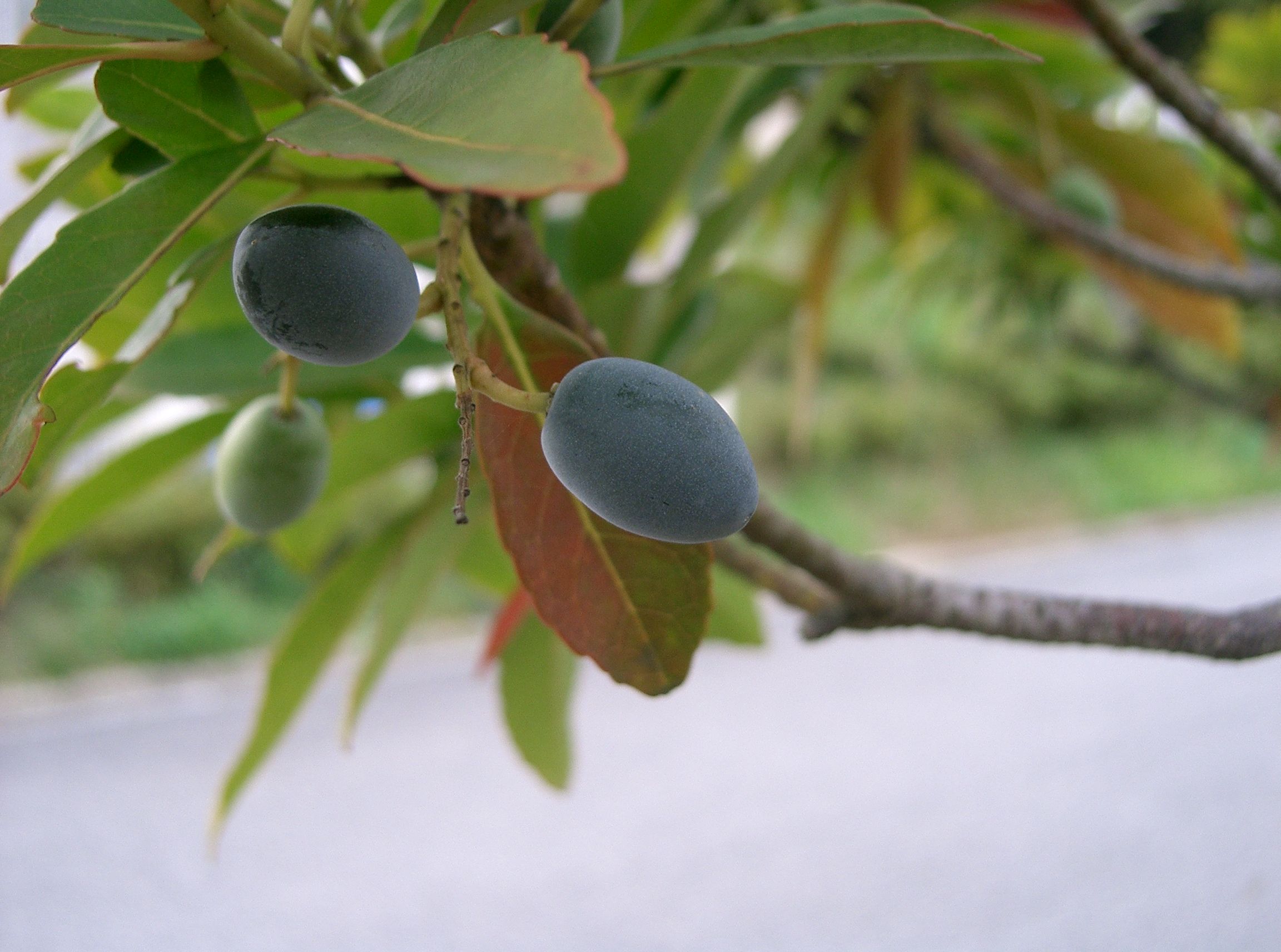
Elaeocarpus sylvestris
Also known as the ‘woodland elaeocarpus’, this species can be found in many Chinese provinces like Fujian, Hainan, Yunnan, Guangdong and Sichuan, as well as in Vietnam, Laos and Thailand. This species, with its slender branches, can grow up to around 10 metres high, surviving in high altitudes of up to 2,000 metres.
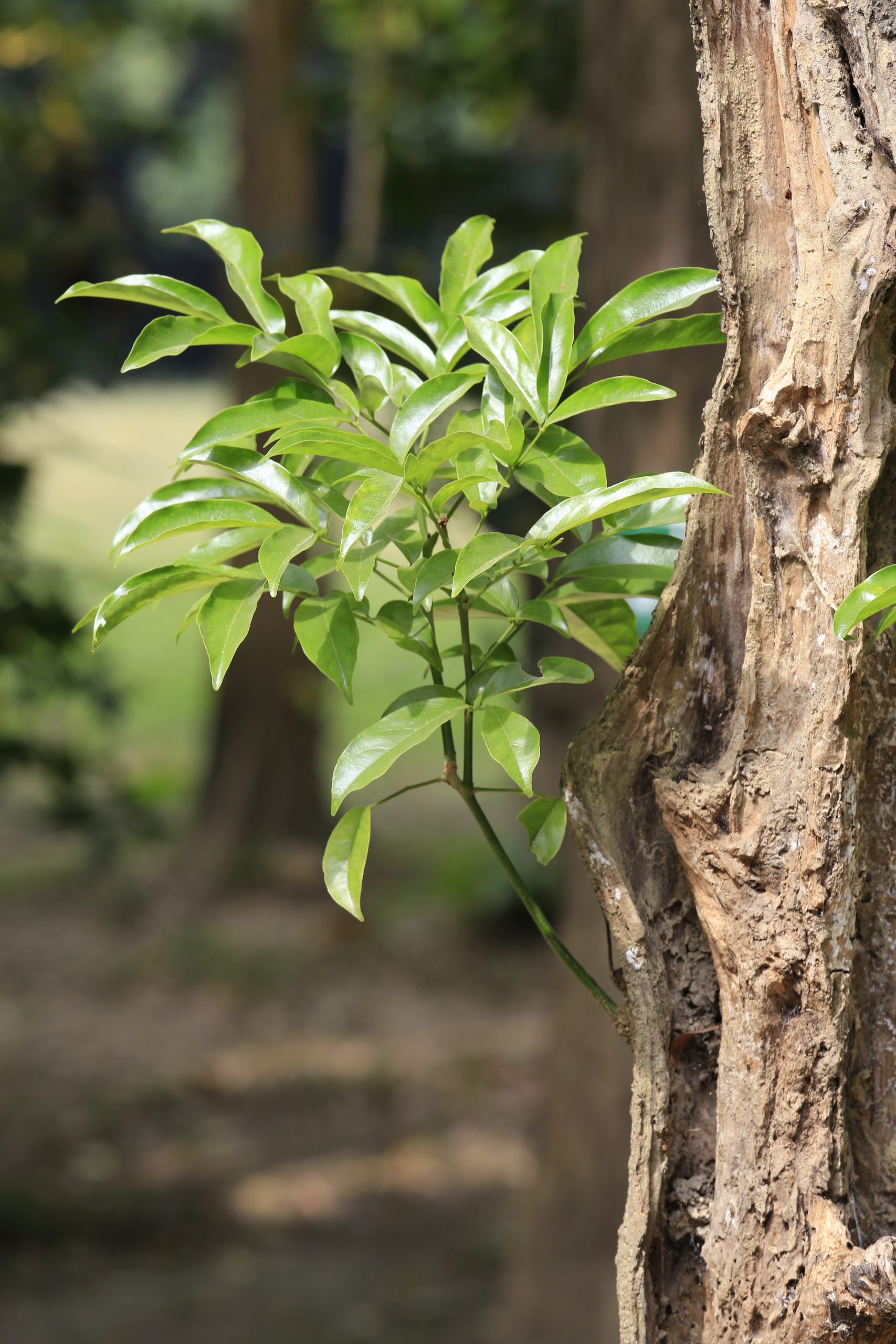
Ormosia pinnata
Also known as the ‘Hainan ormosia’, this species is commonly found in the Guangxi, Hainan and Guangdong provinces, as well as in Vietnam and Thailand. Its wood can be used for furniture and as a building material. This species typically flowers from June to August.
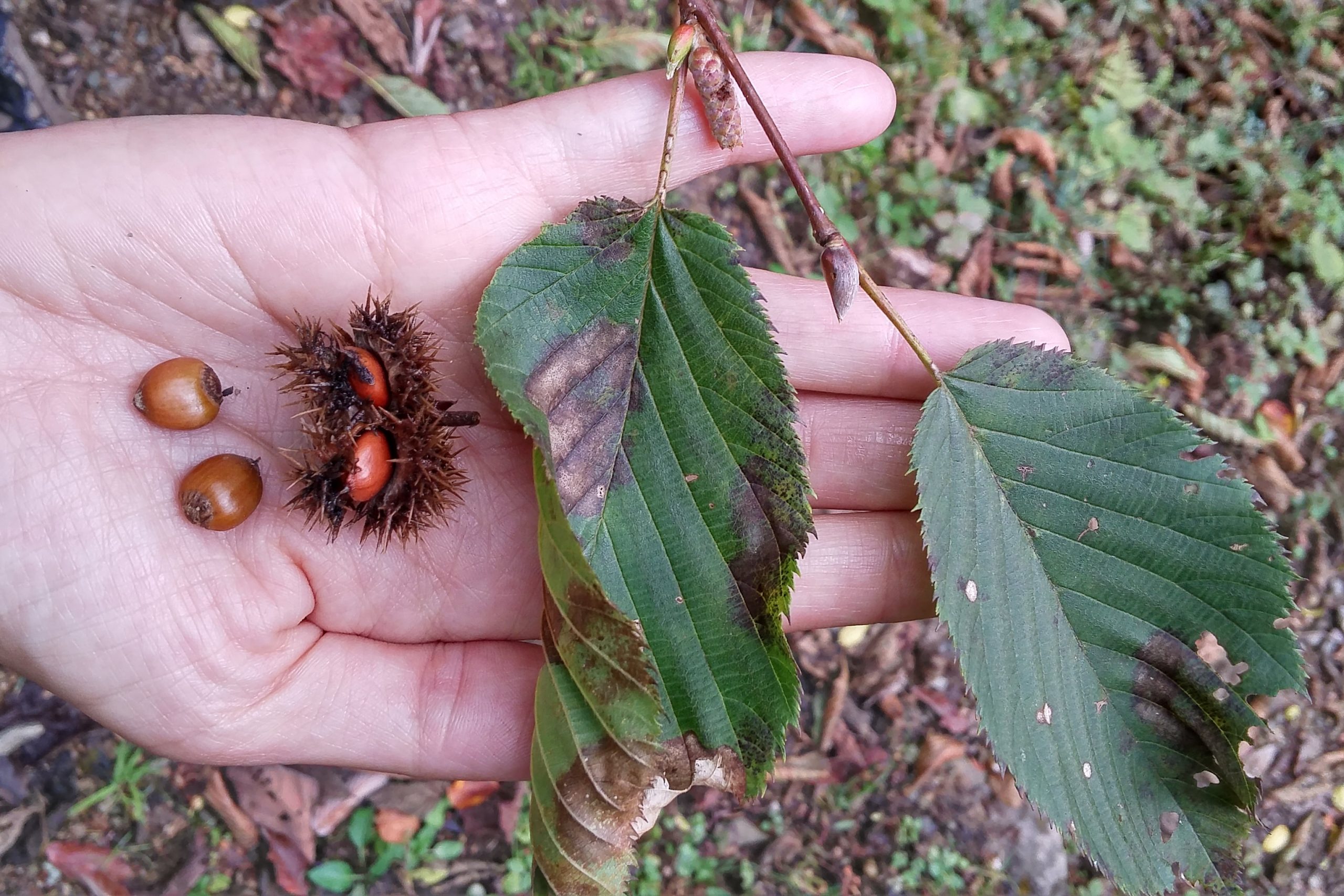
Castanopsis hystrix
This tree species – also known as the ‘red oak chestnut’ – can grow up to 25 metres high and flowers from April to June, bearing fruit from August to November. This species can survive on slopes from 30 to 1,600 metres above sea level. It is commonly found in provinces like Guangdong, Hainan, Guangxi and Yunnan.
Branching out
On top of the reforestation project in Coloane, the IAM also aims to plant more than 5,000 trees around the city’s green belts and pavements over the coming months. According to a spokesman from the bureau, 2,118 trees were planted in the first quarter of this year following a total of 1,849 trees planted last year. Chan Shek Kiu, an emeritus professor at the University of Saint Joseph’s Institute of Science and Environment, works in environmental protection and management. He supports the replanting of additional trees in Macao and talks us through the pros and cons of such a project…
Pros
- They help slow down global warming by cutting down on atmospheric carbon dioxide
- They reduce the chances of landslides
- They provide natural habitat for animals
- More trees means improved air quality
- Certain tree species can be ‘saved’
- Planting trees provides employment
- The process can also educate children
- New trees provide shade
Cons
- Planting trees cuts down on the available space for housing projects
- More trees means an increased chance of wildfires
- Planting and maintaining trees can be expensive
- Pests and litter can be spin-off problems
Professor Chan says: “Once further replanting is carried out in Macao, the climate may change, making it cooler in the summer, allowing Macao residents and tourists to go hiking under tree shades. The green areas of Macao will be increased and the city will attract more tourists, allowing more ecotours to be organised to educate residents, especially children and students.”
